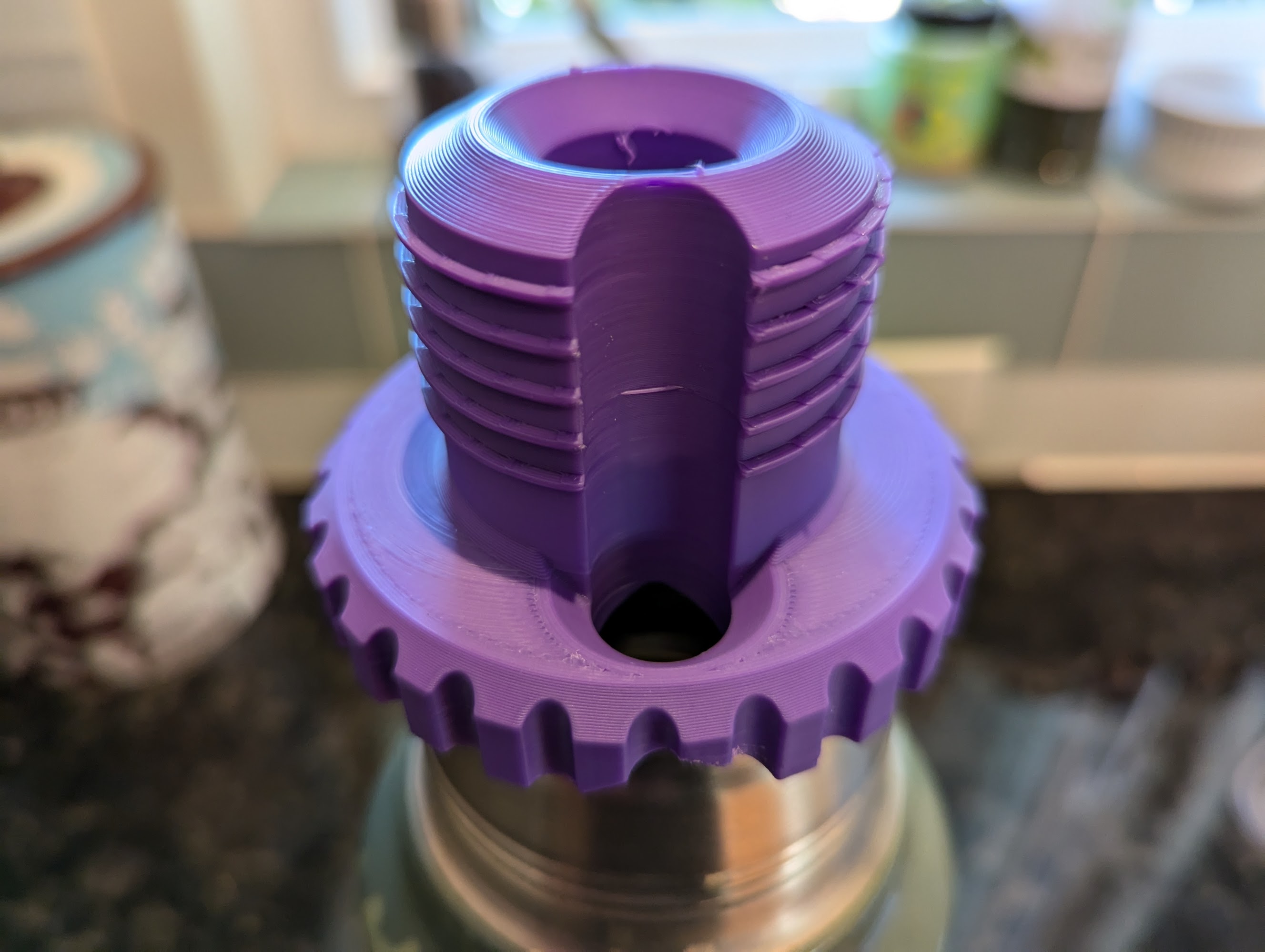
Alright gearheads, let’s talk turkey about something that seems utterly basic but is actually rife with peril: the humble oil change. You might think it’s just a simple drain-and-fill operation, a weekend warrior task, but oh, how wrong you can be. It’s the lifeblood of your engine, the stuff that keeps all those metal bits from grinding themselves into an expensive, unholy mess. Yet, despite its critical importance, countless drivers – both seasoned DIYers and those who trust the wrong shop – fall prey to a litany of mistakes that can range from minor annoyances to catastrophic engine failure.
Indeed, changing your car’s oil is like giving it a refreshing drink of water after a long run; it’s an essential task that keeps your car’s engine healthy and running smoothly. But here’s the kicker: even though oil changes seem straightforward, many car owners make mistakes that can harm their vehicles. These blunders often turn routine maintenance into a wallet-draining nightmare, costing you thousands, voiding warranties, and potentially leaving you stranded with a very unhappy engine.
So, buckle up, because we’re about to tear into the most common oil change mistakes, offering the kind of brutal honesty and deep-dive insight you’ve come to expect. We’re not just listing problems; we’re dissecting why they happen, what they’ll cost you, and, most importantly, how to avoid them. Consider this your definitive guide to keeping your engine purring like a contented beast, rather than coughing up its guts in a cloud of expensive smoke. Let’s get dirty, so your engine doesn’t have to.

1. **Not Changing Oil Frequently Enough**There’s a surprising amount of confusion swirling around how often you actually need to swap out your car’s engine oil. The ancient guideline insisted on ‘every three months or every 3,000 miles,’ and for a long time, that was the unquestioned truth. However, advancements in automotive technology mean most modern vehicles can, and should, go a good bit longer between changes.
Depending on your specific ride and the oil it uses, you might be looking at intervals anywhere from 5,000 to 7,500 miles, or even six to twelve months. Your car’s owner’s manual is your definitive guide here; it will lay out the exact timeframe. Deviating from it is simply playing Russian roulette with your engine’s longevity.
Skipping regular oil changes isn’t just about ignoring a schedule; it’s an open invitation for trouble. Over time, your car’s oil deteriorates, losing its ability to properly lubricate all those intricate, high-friction engine components. This decline directly leads to worse gas mileage, dangerous sludge build-up, and a significantly shortened overall lifespan for your vehicle.
Even if your car mostly naps in the driveway, oil can still degrade due to temperature fluctuations. Towing heavy loads also accelerates oil degradation. Modern vehicles often have dashboard alerts informing you when it’s time for a change; always follow these warnings to prevent issues from compounding and costing you more down the road.
Read more about: 9 Obscure Sedans That Boomers Loved: Unearthing the Relics Modern Drivers Overlook

2. **Using the Wrong Kind of Oil**If you think all motor oils are created equal, prepare for an expensive lesson. Motor oils differ greatly in viscosity, additives, and base stock. While auto shops should know best, DIYers bear the responsibility of knowing their engine’s specific needs. You’ve got conventional, high mileage, synthetic, and synthetic blend varieties, each designed for a particular purpose.
Your owner’s manual, once again, holds the key, telling you precisely which type is best. Ignoring it is risky. The wrong oil isn’t just a minor oversight; it can significantly harm your vehicle’s fuel economy. An improperly lubricated engine strains harder, burning more fuel and making you a regular at the gas pump.
But that’s merely the beginning. The real danger brews when the wrong oil repeatedly circulates. It might lack crucial additives, leading to accelerated wear and tear that can culminate in total engine failure. The American Automobile Association (AAA) found that using the wrong type of oil can increase engine wear by up to 30%. This isn’t theoretical; some car warranties become void if incorrect oil usage is proven.
Sure, a cheaper, different oil might seem smart initially. Synthetic oil can cost twice as much as conventional. However, faced with the agonizing price tag of replacing an entire engine, anyone will wish they had just shelled out for the recommended, pricier fluid. When in doubt, consult your manual or a trusted professional; your engine deserves the right stuff.
Read more about: Sara Jane Moore: An In-Depth Examination of the Enigmatic Figure Who Attempted to Assassinate President Ford

3. **Failing to Warm Up the Engine First**Let’s clear up a common misconception: letting your car ‘warm up’ before driving in the cold is largely unnecessary for modern vehicles. They don’t need minutes of idling before hitting the road. However, there’s one crucial instance where a warm-up is absolutely necessary: right before an oil change. This isn’t an old wives’ tale; it’s pure, unadulterated fluid dynamics.
As The Seattle Times explains, “The five-minute rule is a good one. You warm up the oil so it’s less viscous and it flows better. That way, less of the old oil remains inside the engine — stuck to the walls of the oil pan and other engine parts.” Think of it like pouring thick, cold syrup versus warm, runny syrup. Warmer oil is thinner, more fluid, and significantly more eager to escape, taking more accumulated gunk with it.
While you *can* drain cold oil, you’ll wait longer for it to trickle out, and more importantly, you won’t remove all the undesirable debris. The goal is a truly clean slate for your fresh lubricant. However, a word to the wise: don’t go from a highway blast directly to draining. Extremely hot oil is a serious burn risk. It’s recommended to wait about 30 minutes after a drive for the oil to cool to a manageable, warm temperature.
This crucial step ensures the old, dirty oil, along with any suspended crud, exits as completely as possible. It primes the engine for new oil, setting the stage for optimal performance and reducing the chances of lingering debris prematurely contaminating your fresh batch. It’s a small investment of time for a big return in engine health.
Read more about: Hold Up! 12 Electric Vehicles That Have Owners Wishing for a Do-Over

4. **Overfilling or Underfilling the Oil**Ah, the Goldilocks principle of oil changes: not too much, not too little, but *just right*. Yet, so many DIYers stumble at this seemingly straightforward hurdle, leading to consequences that are anything but minor. Determining the correct oil level isn’t a suggestion; it’s a non-negotiable requirement for a healthy engine, and deviating from it spells trouble in bold, capital letters.
Let’s start with underfilling. If your engine runs with insufficient oil, vital moving parts don’t get the lubrication they desperately need. This translates to increased friction, accelerated wear, and performance issues like struggling acceleration or laboring up hills. It’s akin to trying to run a marathon on a glass of water – unsustainable and damaging.
On the flip side, overfilling an engine with oil is equally insidious. Too much oil risks contact with the crankshaft, aerating it into a foamy mess that drastically reduces lubrication. Worse, it can lead to oil entering the exhaust pipe, gradually clogging it. Overfilling also dramatically increases internal engine pressure, which can blow out gaskets and seals, paving the way for expensive oil leaks.
The telltale signs of an overfilled engine include unsettling odd noises from under the hood and, alarmingly, smoke wafting from the tailpipe. Your owner’s manual is your ultimate authority, detailing the precise amount your engine requires – typically between 5 to 8 quarts. Resist the urge to guess; your engine’s lifespan depends on accuracy. Always use the dipstick to check the oil level, ensuring it falls within the recommended range.

5. **Forgetting to Install a New Oil Filter**Changing your oil but neglecting the filter is like taking a shower but putting back on your dirty underwear. What’s the point? Your car’s engine needs more than just fresh lubricant; it absolutely demands a clean, efficient oil filter with every oil change. This unsung hero is the primary defense against dirt, debris, and gunk circulating freely through your engine, ensuring only pure, clean oil reaches those vital components.
If you swap out the oil but leave a grimy, clogged filter in place, you’ve essentially negated the entire exercise. All accumulated sludge and contaminants trapped by the old filter will instantly begin circulating through your brand-new oil. The engine won’t receive proper lubrication, accelerating wear, decreasing efficiency, and significantly increasing the risk of overheating. A full-service oil change at a reputable shop should include a new filter, but if DIYing, this is one expense you cannot skimp on.
It’s crucial to understand the types of filters your vehicle might need. Most cars rely on a full-flow filter, the main device designed to capture impurities. Some vehicles may also incorporate secondary oil filters for extra protection. Always consult your manual to ensure you have all necessary filters ready before starting. The Car Care Council found that 22% of vehicles on the road have low or dirty oil, highlighting how widespread this issue is. Don’t be a statistic; change that filter!
Read more about: Simple, Smart, and Sustainable: A Good Housekeeping Guide to Cutting Your Home’s Energy Bills

6. **Installing the New Oil Filter Incorrectly or Using the Wrong Oil Filter**So, you remembered to get a new oil filter – congratulations! You’re already ahead of many. But here’s where things can still go sideways: installing it improperly or, even worse, using the wrong filter altogether. Both scenarios can lead to a world of pain and greasy consequences for your engine.
One common installation blunder is overtightening the filter. While it needs to be secure, cranking it down with brute force is an express ticket to disaster. This can strip delicate threading or, more frequently, bust the O-ring – that crucial rubber seal ensuring a tight, leak-free connection. If that O-ring breaks or isn’t seated correctly, there’s no adequate seal, and you’ll have oil weeping or gushing where it shouldn’t be.
Here’s a pro tip that costs nothing: lubricate the new O-ring before installation. A little dab of fresh engine oil helps it seat properly, creates a better seal, and makes removal easier next time. Crucially, a fresh O-ring *should* come with your new filter, so use it. Beyond technique, the filter itself must be correct for your vehicle, matching its height, gasket size, and thread size.
These specifications are critical for the filter to perform effectively and seal correctly. While aftermarket filters might seem like a bargain, they can be a false economy. Potential inconsistencies in quality or fit aren’t worth the risk to your engine. New oil filters are already inexpensive, so cutting corners here is a penny-wise, pound-foolish decision.
Read more about: Hidden Costs: The 13 Critical Ways You Could Be Voiding Your Car’s Warranty and How to Prevent It

7. **Overtightening the Oil Drain Plug**Once the dark, viscous lifeblood of your engine has evacuated its metallic home, it’s time to seal things back up. The oil drain plug, a seemingly innocuous bolt, holds immense power over your engine’s fate. For many DIY mechanics, the temptation to crank that plug down with the force of a thousand suns to ensure it’s ‘secure’ is almost irresistible. Resist it, my friends, resist it, because overtightening this little hero is a common mistake that can lead to a very expensive, frustrating repair.
Typically, the drain plug relies on simple threading to secure itself. When you tighten it manually and feel it snug up, that’s your cue to stop. Continuing to apply force beyond that point doesn’t make it tighter; it actually begins to damage the threading of the oil pan itself. This is known as cross-threading or stripping, a nightmare scenario where you destroy the means by which it secures itself. Avoid air tools; your hand is usually all the torque you need.
Fast forward a few months, and when it’s time for the next oil change, you might find that drain plug is now permanently affixed – or worse, refuses to seal properly. Removing a stripped drain plug often requires specialized tools, and more often than not, damage is so severe that people end up installing a whole new oil pan altogether. That’s a significantly bigger job, and bill, than a simple oil change.
Of course, nobody wants a loose drain plug; that’s an open invitation for leaks or for the plug to rattle free entirely. The key, as with so many things in life and auto maintenance, is the Goldilocks principle: ensure it’s in there just right – snug and secure, but never, ever overtightened. Your oil pan’s threads, and your wallet, will thank you.
Alright, so we’ve covered the first wave of oil change blunders that can turn your trusty steed into a sputtering mess. But hold onto your lug nuts, because there’s more to this seemingly simple task than meets the eye. The truth is, the devil is often in the details, and overlooking these next few insidious errors can be just as detrimental, leading to those frustrating, wallet-draining headaches we all desperately want to avoid. Let’s dive deeper into the automotive abyss of missed opportunities and learn how to keep your engine singing, not screaming.

8. **Failing to Replace the Drain Plug Gasket**Ah, the humble drain plug gasket – a tiny, inexpensive component that packs a huge punch in preventing oil leaks. It’s a critical piece of the puzzle, yet it’s so small and easy for many DIYers to completely overlook. We’re talking about a part that typically costs a few bucks, but failing to replace it can quickly escalate into a mess, and then into a far more significant repair bill.
The gasket, over time, is subject to the relentless forces of heat cycles and pressure, causing it to warp and break down. This degradation directly increases the risk of an oil leak, transforming a clean, healthy engine bay into a greasy, grimy disaster zone. While some old-school mechanics or online forum warriors might boast about reusing gaskets for hundreds of thousands of miles, that anecdotal evidence, frankly, should be taken with a heavy dose of skepticism and a large pinch of salt. When in doubt, playing it safe is always the smartest bet for your engine’s longevity.
One Reddit user, u/GotMyOrangeCrush, articulated the danger perfectly, stating, “Reusing the washer is how folks end up stripping the pan threads because they end up having to put the bolt on tighter and tighter to make it not leak.” This isn’t just about a potential leak; it’s about a cascading failure. You overtighten to compensate, damage the threads, and then you’re staring down the barrel of an oil pan replacement – all because you tried to save a couple of dollars on a gasket. Trust us, your future self, and your oil pan, will thank you for springing for a fresh one every time.
Read more about: Anguish on the Freeway: 15 Compacts Buyers Wish They Never Drove Off the Lot

9. **Forgetting to Lube the New Filter Gasket**We touched on the importance of lubricating the new O-ring that comes with your oil filter earlier, and the same principle applies to the new filter gasket itself. This seemingly minor step is one of those ‘pro tips’ that makes the difference between a smooth operation and a wrestling match with your engine components. Lubricating the gasket isn’t just about good practice; it’s about ensuring a perfect seal and making your life easier down the road.
A dab of fresh engine oil on that new gasket before installation works wonders. It allows the gasket to seat properly against the engine block, creating a more effective, leak-free seal. Beyond that, it helps the gasket better withstand the torque applied during tightening, preventing damage. And let’s be real, come the next oil change, you’ll be profoundly grateful for that little bit of lube, as it makes removal significantly simpler, reducing the chance of a stuck filter.
Now, we’re not going to lie, this isn’t typically a catastrophic oversight if you forget it. Unless you immediately notice an oil leak, it’s generally safe to assume the gasket is doing its job just fine until the next service. In fact, in many instances, there’s already a little residual oil on the filter housing surface anyway, so it might get a bit of lubrication without you even realizing it. But for those of us who appreciate the subtle art of proper maintenance and despise unnecessary future hassles, this small task is a no-brainer. It’s all about setting yourself up for success, not just for today, but for every mile ahead.

10. **Failing to Reinstall the Engine Oil Fill Cap**You’ve successfully drained the old oil, swapped out the filter, poured in the fresh, golden goodness, and checked the dipstick. Automotive euphoria sets in, and in that moment of triumph, it’s incredibly easy to overlook one dead simple, yet absolutely vital, final step: screwing the engine oil fill cap back on. This isn’t just a minor oversight; it’s an open invitation to a scene straight out of a car-horror movie, and it happens far more often than you’d believe.
The moment you start your engine without that cap securely in place, gravity and engine pressure conspire to create a truly spectacular, and incredibly messy, spectacle. Oil can and *will* spew everywhere, coating your engine bay, the underside of your hood, and potentially even parts of your windshield. It’s not a pretty sight, and a quick image search of this mistake will confirm just how catastrophic the mess can be. Not only do you have a heavy-duty cleaning job ahead of you, but the fun doesn’t stop there.
Because oil has blasted out, you now have an unknown, and likely insufficient, amount of oil in your engine. This means draining whatever’s left and going through the entire oil change process again to ensure you have the correct level. Plus, with the cap off, dirt and other debris could have easily found their way into your freshly filled engine, necessitating another drain to prevent contamination. Learning to DIY an oil change is a great skill that saves money, but forgetting this cap is precisely the kind of mistake that gives you even *more* work, and a whole lot of regret.
Read more about: Unlock Your Car’s Full Potential: 14 Simple DIY Maintenance Tasks Every Driver Must Master for a Longer, Safer Ride

11. **Ignoring the Manufacturer’s Recommendations**Consider your car’s owner’s manual less of a suggestion and more of a sacred text when it comes to maintenance. Vehicle manufacturers pour millions into engineering and testing, and their recommendations for oil type, change intervals, and specific procedures are not arbitrary. They are meticulously determined to ensure optimal engine performance, longevity, and, crucially, to avoid premature wear and catastrophic failures. Yet, far too many drivers, both amateur and seasoned, choose to ignore these vital guidelines.
Whether it’s deviating from the prescribed oil viscosity, pushing oil change intervals far beyond what’s advised, or sidestepping specific procedural nuances detailed in the manual, ignoring these recommendations is akin to telling the engineers who designed your vehicle that you know better. And let’s be blunt: you probably don’t. These guidelines are the bedrock of your engine’s health. “Ignoring these recommendations can lead to reduced engine performance and potential damage,” as the experts repeatedly emphasize.
Beyond the immediate mechanical impact, there’s also the often-overlooked financial consequence. Many car warranties explicitly state that using incorrect oils or failing to follow recommended service schedules can void your coverage. Imagine facing a major engine repair and discovering your warranty is worthless, all because you decided to freestyle your oil changes. The owner’s manual is your ultimate authority for a reason; it’s your car’s blueprint for a long, healthy life. Don’t gamble with it.
Read more about: Unlock Your Car’s Full Potential: 14 Simple DIY Maintenance Tasks Every Driver Must Master for a Longer, Safer Ride

12. **Not Checking for Leaks After Changing Oil**You’ve buttoned everything up, taken the car off the stands, and are ready to declare victory. But hold on a second, champion. The job isn’t truly done until you’ve performed one final, critical inspection: checking for leaks. It’s an oversight that seems small, a ‘post-change oversight’ in every sense of the phrase, but neglecting it can lead to unnoticed oil loss and, you guessed it, potential engine damage down the road.
After you’ve completed the oil change and run the engine for a few minutes to circulate the new oil, it’s absolutely imperative to take a moment to look underneath your car. Inspect the drain plug, the oil filter, and the surrounding areas – especially the oil pan gasket – for any telltale drips or wet spots. These are your early warning signs that something isn’t quite right, that a seal might be compromised, or a component isn’t tightened to spec.
“Failing to check for leaks after an oil change can result in unnoticed oil loss and potential engine damage.” This isn’t just a cautionary tale; it’s a stark reality. A slow, persistent leak can gradually deplete your engine’s lifeblood, leading to insufficient lubrication, increased friction, and eventually, the very problems you were trying to avoid with the oil change in the first place. Catching a leak early means a quick fix, often just a retightening or a simple gasket replacement. Ignoring it means gambling with your engine’s survival.
Read more about: Unlock Your Car’s Full Potential: 14 Simple DIY Maintenance Tasks Every Driver Must Master for a Longer, Safer Ride

13. **Using Low-Quality Oil**Okay, so you’ve learned to use the *right type* of oil for your vehicle – brilliant! But here’s another subtle trap for the unwary: not all oils of the correct *type* are created equal. Opting for low-quality oil, even if it’s technically the right viscosity and blend, is a common mistake that can undermine all your other careful maintenance efforts. This isn’t about conventional versus synthetic; it’s about the inherent quality and integrity of the fluid itself.
Cheap, low-quality oils often skimp on the crucial additives that provide vital protection for your engine’s internal components. These additives are the unsung heroes that resist thermal breakdown, prevent sludge formation, and provide enhanced lubrication under extreme conditions. Without them, your oil will degrade much quicker, losing its protective properties at an accelerated rate, which inevitably leads to increased wear and tear on your engine.
The context is crystal clear: “Low-quality oil lacks the necessary additives and protection for your engine, leading to quicker degradation and increased wear.” You might save a few bucks upfront on the purchase price, but that economy is a false one. The long-term costs of premature engine wear or, heaven forbid, an engine failure, will far outweigh any initial savings. Always prioritize high-quality, reputable oil brands. Your engine deserves the best possible protection, ensuring its longevity and consistent performance for years to come.
Read more about: Protect Your Engine: 14 Critical Habits That Will Destroy Your Car’s Lifespan

14. **Changing Oil on an Uneven Surface**This might sound like a minor detail, but where you perform your oil change can have a significant impact on its effectiveness. Changing your oil on an uneven surface is a common rookie mistake that can lead to two major headaches: inaccurate oil level readings and improper drainage. And when it comes to engine oil, precision is paramount.
Imagine trying to measure water in a tilted cup; you’d get a skewed reading, right? The same principle applies here. If your vehicle isn’t perfectly level, the oil in the pan won’t be distributed evenly, leading your dipstick to give you a false reading. You might think you’ve filled it to the correct level, only to find you’ve actually overfilled or, more commonly, underfilled it, setting the stage for all the problems we discussed earlier.
Furthermore, an uneven surface can hinder proper drainage of the old oil. If the car is tilted, some of that dirty, sludgy oil will inevitably remain pooled in one corner of the oil pan, stubbornly refusing to exit. This means your fresh oil immediately mixes with residual contaminants, diminishing its effectiveness from the get-go. “Always perform oil changes on a flat, level surface to ensure accurate measurements and complete drainage,” is not just advice, it’s a non-negotiable requirement for a truly effective oil change.
Read more about: Unlock Your Car’s Full Potential: 14 Simple DIY Maintenance Tasks Every Driver Must Master for a Longer, Safer Ride

15. **Forgetting to Reset the Oil Change Light**You’ve meticulously gone through every step, avoided all the pitfalls, and your engine is now purring with fresh oil. Victory! But there’s one last, often overlooked, digital detail: resetting that pesky oil change light or service reminder on your dashboard. While it might not directly harm your engine, failing to do so can lead to a significant amount of confusion and undermine your diligent maintenance efforts.
That little indicator light is there for a reason – to help you maintain an accurate schedule for your car’s essential services. If you complete an oil change but forget to reset it, the system will continue to believe your oil is old, and the light will remain illuminated. This can cause frustration and, more importantly, make it difficult to know precisely when your *next* oil change is genuinely due. It throws off your internal maintenance clock.
“Failing to reset the oil change light can lead to confusion about when the next oil change is due.” This isn’t just about an annoying dashboard light; it’s about maintaining a clear, consistent maintenance history. Resetting the indicator ensures that your car’s onboard computer is in sync with reality, allowing you to accurately track your mileage and time until the next service. It’s the final flourish, the digital stamp of approval that signifies a job truly well done, keeping your maintenance schedule clear and your mind at ease.
In the intricate world of automotive maintenance, changing your car’s oil is arguably one of the most fundamental tasks. Yet, as we’ve thoroughly explored, it’s also a process riddled with potential pitfalls that can transform a routine chore into a costly, engine-damaging ordeal. From the seemingly minor oversight of a forgotten gasket to the egregious error of using low-quality lubricants, each mistake carries its own unique set of consequences for your vehicle’s health and your wallet.
Read more about: Level Up Your Thirties: 14 Must-Do Experiences and Life Shifts to Embrace After Turning 30
The takeaway here isn’t to scare you away from DIY oil changes; it’s to arm you with the knowledge and critical insight to execute them flawlessly. Whether you’re a seasoned wrench-turner or just getting started, approaching each oil change with meticulous attention to detail, a healthy respect for manufacturer guidelines, and a commitment to doing things the right way will serve you, and your engine, exceptionally well. After all, your car is an investment, and proper maintenance is the ultimate insurance policy. Keep these crucial points in mind, and you’ll keep your engine running smoothly, efficiently, and reliably for countless miles to come, avoiding those ‘unbuy’ regrets entirely.



